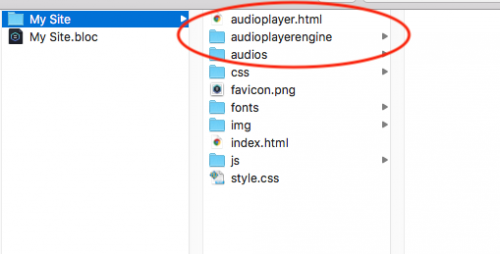


I got to a point in my development career where the first thing that I did with any project was add jQuery, even if I was just creating very simple projects and samples. But, if pounding out node commands is not your thing, John Resig tweeted about a web UI for custom builds the other day. It’s actually really easy and I had no issues getting it to work. You can head over to the GitHub site and create a custom build with Git.
#Jquery conflict amazing audio player code#
That’s no big deal on a desktop, but bits get precious on mobile devices, and there is no point in sending down a bunch of code to support legacy browsers if your app is a mobile one.
#Jquery conflict amazing audio player download#
I know it’s really tempting to use the jQuery CDN and just rock on, but it is important to think about all the code that you are asking your users to download that they might not even need.

However, jQuery is not an all or nothing library anymore. Even though the size has steadily been reduced since 1.8.3, It’s led to some decry from the community claiming it “unsuitable” for mobile development due to it’s sheer mass. This is only natural as new functionality is added. JQuery has steadily kept increasing in size. If you have an array of items and you want to loop through it and filter out some of the items, you might be tempted to use the each method like so: (function($) (jQuery)) 4. People use each like it’s Zack Morris, at which point every looping problem starts looking like Kelly Kapowski. There is nothing wrong with it, except that its not the only iteration function the jQuery provides. It’s incredibly convenient for looping over DOM elements and JavaScript collections. I base this on how often I am tempted to use it and how often I see it in other people’s code. I’ve got no hard evidence to back this up, but I’d be willing to guess that the each function is the most used of the jQuery utility methods. This element comes after the scripts and won't be available. if you include your scripts at the very bottom, you don't need document ready This element is on the page BEFORE all the scripts. If you are adhering to the “scripts at the bottom” best practice, then you have no need for jQuery’s document ready function as the HTML is already loaded by the time the script is run. It also gives you a chance to use a spinner or loading overlay if you are completely dependent on JavaScript for your UI. Loading all scripts last will at least make your application seem to load faster. That means that if you have a large script in the head of your page, it will delay loading of the DOM and make your page seem slower than it actually is. The HTML5 async attribute notwithstanding, scripts are loaded and executed synchronously by the browser. Nowadays, it’s considered best practice to include your scripts at the bottom of the page. This was especially true if you were using partial views of some sort that were injected into the layout/master page by the server at runtime.

Stop Using Document Readyīack in the day of heavy server frameworks, knowing that your page was fully constructed before you tried to mutate it was a big deal. In doing so, I’d like to share 5 things in jQuery that I think you should think twice about doing. I’ve had my heart broken a few times and learned a some things along the way. Since then, I’ve spent a few years at the Bayside of jQuery. Some of the worst jQuery code ever written was written by me – I can assure you of that. With tears of joy running down my face, I opened up a document ready function and then just vomited up massive amounts of jQuery. When I learned about jQuery, I think I did what many people do. I was using vanilla JS and really struggling with understanding when elements on a page were ready and how I could access them. When I first started using jQuery, I was so excited.


 0 kommentar(er)
0 kommentar(er)
